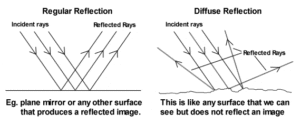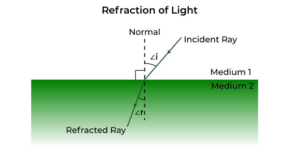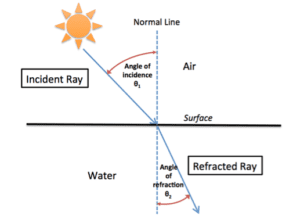Optics is a branch of physics that deals with the study of light, its behavior, and its interaction with matter. It encompasses the understanding of how light is generated, how it propagates through different media, and how it interacts with various optical components and instruments. Optics explores phenomena such as reflection, refraction, diffraction, interference, polarization, and the formation of images. Optics plays an important role in various fields such as physics, engineering, astronomy, and telecommunications.
Optics definition
Optics definition: Optics is a branch of physics that deals with the behavior and properties of light, including its interactions with matter. It encompasses the study of light’s generation, propagation, and detection, as well as the principles governing the formation of images and the behavior of optical instruments.
Nature of Light
- Wave-Particle Duality: Light exhibits both wave-like and particle-like properties. This duality is described by the wave-particle duality principle, which means that light can be thought of as both electromagnetic waves and as discrete particles called photons.
- Electromagnetic Spectrum: Light is part of the electromagnetic spectrum, which includes a broad range of electromagnetic waves with varying wavelengths and frequencies. The spectrum includes radio waves, microwaves, infrared radiation, visible light, ultraviolet radiation, X-rays, and gamma rays.
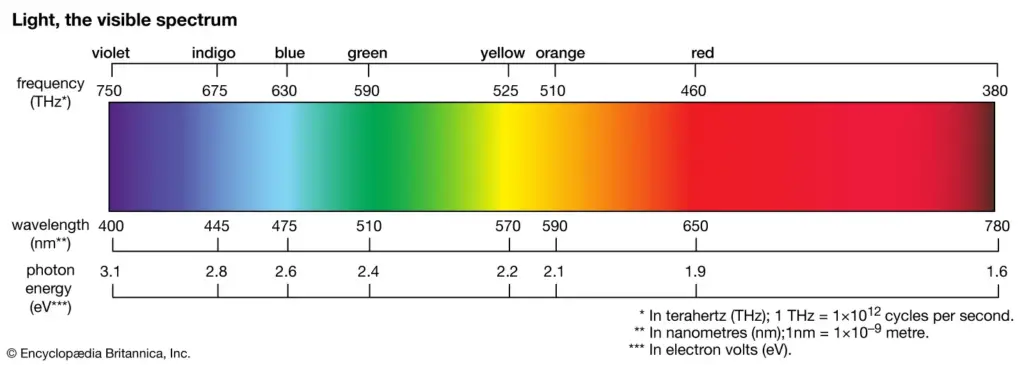
Types of Optics
Geometrical Optics
Geometric optics describes the behavior of light in terms of rays and assumes that light travels in straight lines. It focuses on the principles of reflection and refraction. Geometric optics is particularly useful for understanding the formation of images by mirrors and lenses.

- Ray Optics: Describes the behavior of light as straight-line rays. It’s applicable when the size of obstacles or openings is much larger than the wavelength of light.
- Reflection: The bouncing back of light when it strikes a surface. The angle of incidence is equal to the angle of reflection, following the law of reflection.
- Refraction: The bending of light as it passes from one medium to another with a different refractive index. The change in the speed of light causes the change in direction.
- Lenses: Optical devices that focus or diverge light. Converging lenses bring parallel light rays to a focus while diverging lenses spread them out.
- Mirrors: Reflective surfaces that can form images by reflecting light. Concave mirrors converge light, while convex mirrors diverge light.
Physical or Wave Optics
Physical optics, also known as wave optics or wave theory of light, considers light as an electromagnetic wave. It explores the phenomena of interference, diffraction, and polarization.
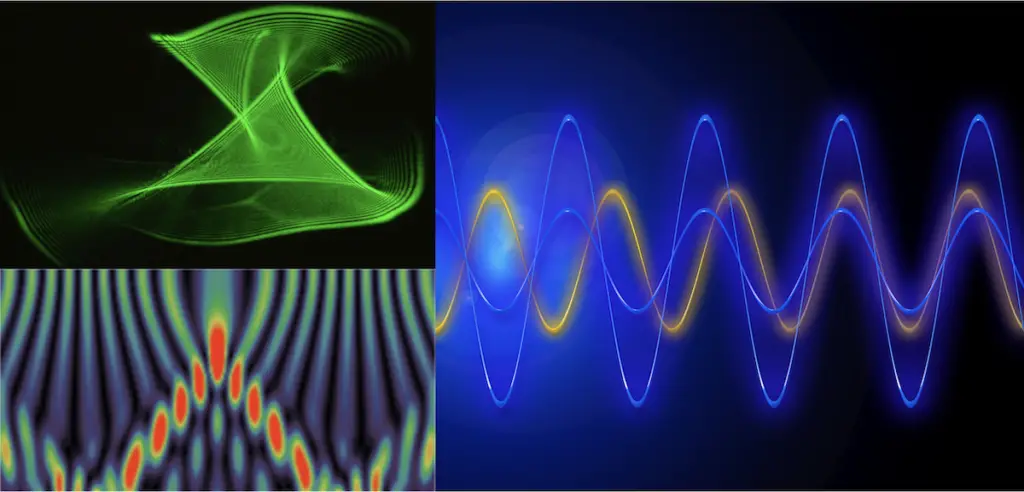
- Wavefronts: Surfaces that connect points of a wave that are in phase (having the same phase of the oscillation).
- Huygens’ Principle: Every point on a wavefront can be considered a source of secondary spherical wavelets; the new wavefront is the envelope of these wavelets.
- Interference: The superposition of two or more coherent waves, resulting in a pattern of constructive and destructive interference.
- Diffraction: The bending of light waves around obstacles and the spreading of light as it passes through small openings.
Polarization: Polarization concerns the alignment of light waves in a specific direction.
- Polarized Light: Light in which the electric fields of all the waves are oriented in the same direction. Polarization can occur through reflection, transmission, or scattering.
- Polarizers: Devices that selectively transmit light of a particular polarization orientation.
Quantum Optics

Quantum optics investigates the interaction between light and matter at the quantum level. It focuses on phenomena such as the emission and absorption of photons, quantized energy levels, and the behavior of light in the presence of atoms and molecules. Quantum optics is essential for understanding topics like laser physics, quantum information processing, and the quantum nature of light.
Fiber Optics

Fiber optics involves the transmission of light through thin, flexible fibers made of transparent materials, typically glass or plastic. It focuses on the properties and applications of optical fibers, which are widely used for long-distance communication, data transmission, and medical imaging. Fiber optics utilizes principles from geometric and physical optics to ensure efficient light propagation through the fibers.
Optical Instruments
Optical instruments are devices that utilize the principles of optics to manipulate, measure, or detect light. They are designed to enhance our ability to see, analyze, and understand the properties of light and its interaction with matter. Here are some common optical instruments:
- Microscope: A microscope is an instrument used to magnify small objects, allowing us to observe details that are not visible to the naked eye. It works by focusing light onto the specimen and then magnifying the image using lenses or a combination of lenses and mirrors. Microscopes are widely used in biology, medicine, materials science, and other fields.
- Telescope: Telescopes are optical instruments designed to observe distant objects in the sky, such as stars, planets, and galaxies. They collect and focus light from celestial bodies, enabling us to study them in detail. Telescopes can be classified into different types, including refracting telescopes (which use lenses) and reflecting telescopes (which use mirrors).
- Binoculars: Binoculars are handheld optical instruments consisting of two small telescopes mounted side by side. They provide magnified and stereoscopic views of distant objects, making them useful for activities such as birdwatching, stargazing, and sports events.
- Camera: Cameras use optics to capture and record images. They consist of a lens system that focuses light onto a photosensitive surface, such as a film or digital sensor. Cameras have numerous applications in photography, filmmaking, surveillance, and scientific imaging.
- Spectrophotometer: A spectrophotometer is an instrument used to measure the intensity of light as a function of its wavelength. It is commonly used in spectroscopy to analyze the absorption, transmission, or reflection of light by a sample. Spectrophotometers find applications in chemistry, biochemistry, environmental analysis, and materials science.
- Laser: Although lasers can be considered both a light source and an optical instrument, they are worth mentioning due to their unique properties. Lasers produce a highly coherent and intense beam of light. They have diverse applications in areas such as telecommunications, laser surgery, manufacturing, scientific research, and entertainment.
- Interferometer: An interferometer is an instrument that exploits the interference of light waves to make precise measurements. It can measure parameters such as distance, thickness, refractive index, and surface irregularities. Interferometers are used in fields like metrology, astronomy, and optical testing.
- Fiber Optic System: Fiber optic systems utilize optical fibers to transmit and manipulate light signals. They consist of fiber optic cables, connectors, and various optical components such as couplers, splitters, and modulators. Fiber optic systems are essential for high-speed internet communication, long-distance data transmission, and sensing applications.
These are just a few examples of optical instruments. There are many more specialized instruments and devices that rely on optics for specific applications, including spectroscopes, endoscopes, optical tweezers, optical scanners, and laser rangefinders. Optical instruments continue to advance, enabling new discoveries and technological developments in various fields.
Optics applications
Optics has extensive applications in various fields, including astronomy, telecommunications, medicine, and manufacturing. It plays a crucial role in developing technologies such as lasers, fiber optics, and imaging systems. Here are some important applications of optics:
- Imaging and Photography: Optics plays a fundamental role in imaging systems, including cameras, telescopes, microscopes, and medical imaging devices. It enables the formation, manipulation, and detection of images by capturing and focusing light.
- Telecommunications: Optics are essential for long-distance communication systems. Optical fibers are used to transmit data as pulses of light, allowing for high-speed and high-capacity communication over long distances. Fiber optic cables are widely employed in telecommunication networks, internet connections, and cable television systems.
- Laser Technology: Lasers (Light Amplification by Stimulated Emission of Radiation) are devices that produce intense and coherent beams of light. Lasers have numerous applications, including laser cutting and welding, laser surgery, laser printing, laser spectroscopy, barcode scanning, and fiber optic communications.
- Optoelectronics: Optoelectronics involves the study and application of devices that convert electrical signals into light and vice versa. Examples include light-emitting diodes (LEDs), solar cells, photodetectors, optical modulators, and displays. Optoelectronic devices are used in lighting, displays (e.g., LED TVs and smartphone screens), optical data storage, sensors, and many other fields.
- Microscopy and Medical Imaging: Optics plays a crucial role in microscopy, enabling scientists and medical professionals to observe and analyze objects at the microscopic level. Techniques such as bright-field microscopy, fluorescence microscopy, confocal microscopy, and optical coherence tomography (OCT) rely on optics to visualize biological samples, study cellular structures, and diagnose medical conditions.
- Astronomy and Astrophysics: Optics is vital in the field of astronomy for observing celestial objects and studying the universe. Telescopes, including optical telescopes and radio telescopes, use optics to collect and focus light from distant stars, galaxies, and other celestial bodies. Optics also play a role in spectroscopy, which helps analyze the composition, temperature, and motion of celestial objects.
- Spectroscopy: Spectroscopy involves the study of the interaction between light and matter. It provides valuable information about the composition, structure, and properties of materials. Spectroscopic techniques, such as absorption spectroscopy, fluorescence spectroscopy, and Raman spectroscopy, are widely used in chemistry, physics, biology, environmental science, and materials science.
- Holography: Holography is a technique that uses light interference patterns to create three-dimensional images. It has applications in art, security, data storage, and display technologies.
- Biophotonics: Biophotonics combines optics with biology and medicine. It involves the use of light-based techniques for imaging, diagnostics, and therapies in the life sciences. Applications include fluorescence microscopy, optical coherence tomography (OCT), bioluminescence imaging, and photodynamic therapy.
Stay tuned with Laws Of Nature for more useful and interesting content.
References:






